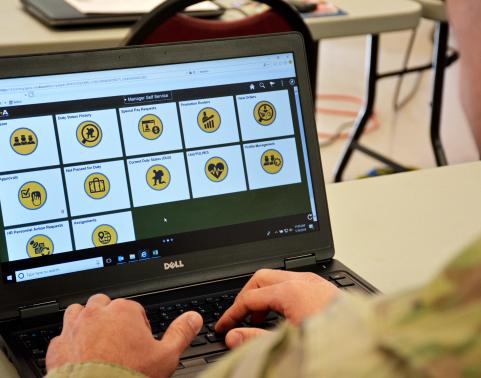PEO EIS Prepares to Support Army’s Unified Network Priority

Last fall, Lt. Gen. John Morrison, Army deputy chief of staff, G-6, announced his office would prioritize a unified network concept to integrate the Army’s tactical and enterprise networks, furthering the service’s modernization goals and supporting multi-domain operations. PEO EIS, along with Program Executive Office Command, Control, Communications – Tactical, and the Network Cross-Functional Team, were named collaborators in establishing the Army’s unified network.
For its part, EIS has begun pursuing a more consolidated, holistic approach to the integrated enterprise network, so it can be successfully linked with the integrated tactical network, said John Howell, assistant program executive officer for networks, cyber and services at PEO EIS.
Howell cited the example of a unit that is about to deploy. “They may have everything they need on the tactical side to keep them going operationally, but eventually they’ll need access to the enterprise network as well. They’ll need to be able to take full advantage of programs like the Integrated Personnel and Pay System – Army or Army Vantage, and their unit will need access to capabilities within ‘cloud-Army’ — or cArmy — in order to do their mission. This will all require connecting with the enterprise network,” said Howell.
To integrate the tactical and enterprise networks, “we can’t do business the same old way,” Howell added, noting that EIS is following the Army’s Halt, Fix and Pivot network modernization strategy to achieve integration and synchronization across the enterprise.
Up until now, the Army’s various network modernization, voice modernization and enterprise services initiatives have been separately fielded to Army posts, camps and stations, resulting in a lot of great capabilities but a lack of synchronization. Meanwhile, in the commercial sector, communications services have long been bundled to enable more efficient use of technology and, in the end, a better customer experience.
“We need to get to that holistic approach, not only to better serve our customers but also to meet shrinking budgets,” said Howell. “Likewise, we need to be fully aware that what we do at the enterprise level affects the tactical level, and vice versa,” he added.
One example of how EIS is attempting to achieve better synchronization involves the Army’s voice strategy. To help the G-6 define a less costly strategy for providing voice capabilities to 1.45 million users across all theaters, EIS’s Enterprise Services project office and Defense Communications and Army Transmission Systems project office recently created a voice cost model to forecast costs for three possible courses of action.
One of the options involves using the voice capabilities provided by Microsoft Office 365 (O365), which is being rolled out to the Army.
Regardless of which course of action the Army opts to pursue, EIS will continue to take a more comprehensive approach to fielding network capability.
“Metcalfe’s law states that the value of a network is directly proportional to the number of connected users on it,” said Howell. “Nowhere is that more relevant than in the Army’s Unified Network concept. It is no longer viable for us to talk ‘enterprise vs. tactical.’ We must now ensure that warfighters at all levels can take full advantage of one unified network.”
Related News
-
Jason Morneault assumes command of Wideband Enterprise Satellite Systems
August 22, 2023On June 30, Project Manager Integrated Enterprise Network (IEN) conducted an assumption of charter ceremony for the Wideband Enterprise Satellite Systems (WESS) Product Management Office. -
Joe David values determination, hands-off leadership and family
June 27, 2023“You must want it mentally and you must show it physically, giving it your all.”
As an aspiring high school football player, Joe David received this advice from his father.
-
Darius White Explains the Power of Storytelling
April 26, 2023“Storytelling is a way to connect with people, even if it is fanciful or scientific, on another level,” said Darius White.
Work for Us
Join a winning team! Search for job opportunities with PEO Enterprise.
Work with Us
Help support important missions. Explore ways your company can work with PEO Enterprise.